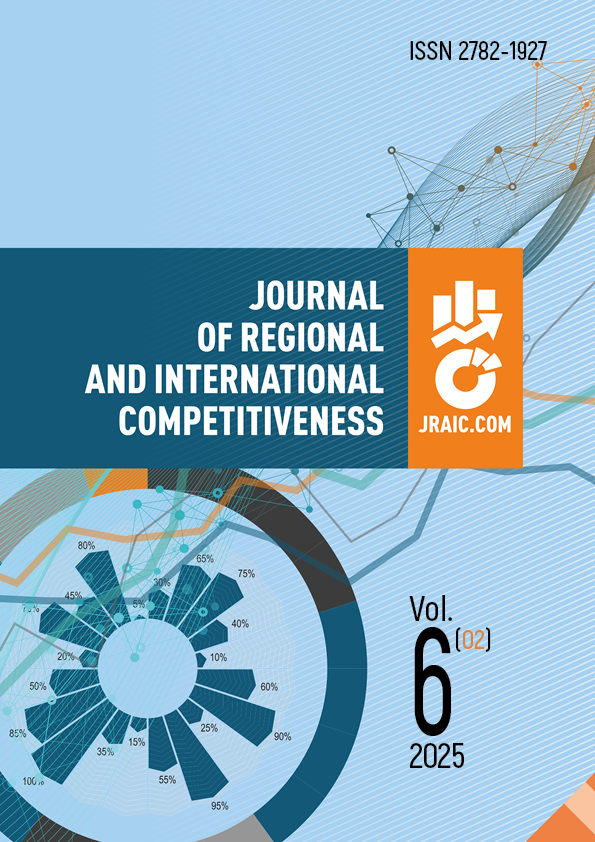Yaroslavl, Yaroslavl, Russian Federation
Yaroslavl, Yaroslavl, Russian Federation
Yaroslavl, Yaroslavl, Russian Federation
VAK Russia 5.2.3
The article analyses the import substitution policy of Russia in different historical periods. The research compares industrialisation and neoindustrialisation as typical models of economic policy in the USSR and modern Russia. Authors use a historical-comparative approach to identify the characteristic features of the economic policies. According to them, Soviet methods are inappropriate in the modern economy due to fundamental changes in socio-economic conditions and the technological landscape. Moreover, nowadays the intensive development based on the introduction of innovations and increased labour productivity replaces the extensive production growth of the past. However, successful import substitution in modern Russia requires imported products replacement and competitive domestic analogues production. The paper highlights the relevance of active government support for innovation, stimulating industrial cooperation, and introducing of effective consumers feedback mechanisms. The analysis of regional experience, in particular, of the Yaroslavl region, demonstrates significant differentiation in the degree of import dependence and the structure of economies. It provides the development of regional import substitution strategies. Therefore, the active introduction of high-tech technologies and artificial intelligence will increase the competitiveness of Russian industry and ensure its technological sovereignty. Hence, integrated approach combining government support, innovation, and adaptation to regional specifics helps implement the import substitution strategy in the Russian Federation.
import substitution strategy; neoindustrialisation; development institutions; Industry 4.0; economic policy of Russian regions
1. Ahmad, J. (2007). Import substitution – A survey of policy issues. The Developing Economies, 16(4), 355-372. Retrieved from https://doi.org/10.1111/j.1746-1049.1978.tb01070.x (accessed: 30.01.2025)
2. Aregbeshola, R. A. (2017). Import substitution industrialisation and economic growth – Evidence from the group of BRICS countries. Future Business Journal, 3(2), 138-158. Retrieved from https://doi.org/10.1016/j.fbj.2017.06.001 (accessed: 30.01.2025)
3. Alekseev, S. A., Bezlepkin, M. N., & Bore, A. E. (2023). Import substitution in the Russian economy: Yesterday and tomorrow. Moscow: Izdatel'skij dom Vysshej shkoly ekonomiki (in Russian).
4. Irwin, D. A. (2021). The rise and fall of import substitution. World Development, (139), 105306. Retrieved from https://doi.org/10.1016/j.worlddev.2020.105306 (accessed: 30.01.2025)
5. Jackson, E. A., & Jabbie, M. N. (2020). Import substitution industrialization [ISI]: An approach to global economic sustainability. Industry, innovation and infrastructure. Retrieved from https://doi.org/10.1007/978-3-319-71059-4_116-1 (accessed: 30.01.2025)
6. Khomenko, E. B. (2024). Digital transformation of industry as a condition for neoindustrialization. Vestnik Udmurtskogo universiteta. Seriya "Ekonomika i pravo", 34(2), 278-283. Retrieved from https://doi.org/10.35634/2412-9593-2024-34-2-278-283 (accessed: 30.01.2025) (in Russian)
7. Knobel, A. Yu., Bagdasaryan, K. M., & Loshchenkova, A. N. (2019). Sanctions. Seriously and for a long time. Moscow: Delo (in Russian).
8. Myasnyankina, O. V. (2023). Factors determining rates of neo-industrialization in Russia. Region: Sistemy, Ekonomika, Menedzhment, (1), 44-51 (in Russian).
9. National economy of the USSR: Statistics. Yearbook (1956). Moscow: Gosstatisdat Central'nogo Soveta SSSR (in Russian).
10. Oruch, T. A. (2023). A model for the intensification of import substitution in industry based on the introduction of technological innovations. Ekonomika i menedzhment: problemy, puti ih resheniya, 4(3), 115-123 (in Russian).
11. Patrusheva, E. G., & Rajhlina, A. V. (2021). Clustering as a competitive advantage of regional economics. Journal of Regional and International Competitiveness, 2(3), 33-41. Retrieved from https://ystu.editorum.ru/ru/nauka/issue/4965/view DOI: https://doi.org/10.52957/27821927_2021_2_33
12. Patrusheva, E. G., & Rajhlina, A. V. (2021). The role of development institutions in enhancing regional competitiveness. Journal of Regional and International Competitiveness, 3(4), 70-78. Retrieved from https://ystu.editorum.ru/ru/nauka/issue/4965/view DOI: https://doi.org/10.52957/27821927_2021_3_70
13. Safiullin, A. R. (2017). Main directions of neo-industrialization policy in the modern economy. Nauchno-tekhnicheskij vestnik Sankt-Peterburgskogo gosudarstvennogo pedagogicheskogo universiteta. Ekonomicheskie nauki, 10(6), 40-49 (in Russian).
14. Schwab, K. (2023). The Fourth Industrial Revolution. Moscow: Eksmo (in Russian).
15. Smirnov, S. V. (2012). The dynamics of industrial production and the economic cycle in the USSR and Russia, 1861–2012. Moscow: Izdatel'skij dom Vysshej shkoly ekonomiki (in Russian).
16. Topoleva, T. N. (2023). Paradigm of neo-industrialization: Theory, methodology, strategic imperatives of Russia. Vestnik sociologii i ekonomiki PNIPU, (3), 183-198. Retrieved from https://doi.org/10.15593/2224-9354/2023.3.13 (accessed: 30.01.2025) (in Russian).




















